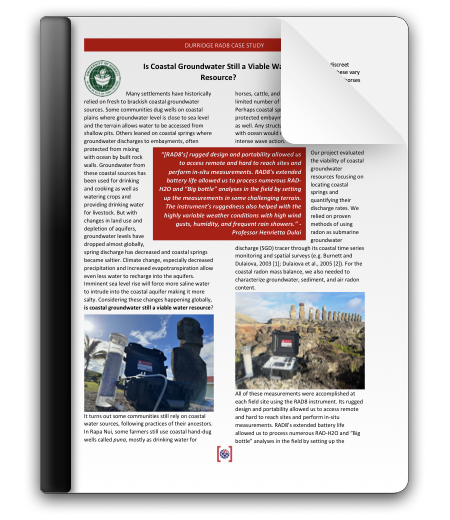Monitoring Thoron in the Presence of Radon to Locate Terrestrial Sources of Pollution in Thailand Waterways
Restoring depleted underground freshwater tables can inadvertently release accumulated pollutants into adjacent waterways via submarine groundwater discharge (SGD). The abundance of 222Rn (Radon) in rocks and soil makes it a useful groundwater tracer for these pollutants. While the presence of elevated Radon in waterways may indicate the presence of SGD, Radon detection alone cannot accurately locate the SGD source if the waterway’s volume is exchanged on a timescale longer than Radon’s 3.82- day half-life, because Radon will be distributed over a large area.
With a half-life of less than 1-minute, 220Rn (Thoron) will only occur in proximity to the groundwater source. According to the project’s leader, FSU Professor Emeritus Dr. Bill Burnett, “The Durridge RAD7’s unique ability to rapidly and accurately discriminate Thoron in the presence of Radon was the key to pinpointing exact sites of groundwater entry to the studied waterways.”
View Case Study (PDF)
Is Coastal Groundwater Still a Viable Water Resource?
Many settlements have historically relied on fresh to brackish coastal groundwater sources. But with changes in land use and depletion of aquifers, groundwater levels have dropped almost globally, spring discharge has decreased and coastal springs became saltier.
is coastal groundwater still a viable water resource? This project used a RAD8 to evaluate the viability of coastal groundwater resources focusing on locating coastal springs and quantifying their discharge rates.
View Case Study (PDF)



